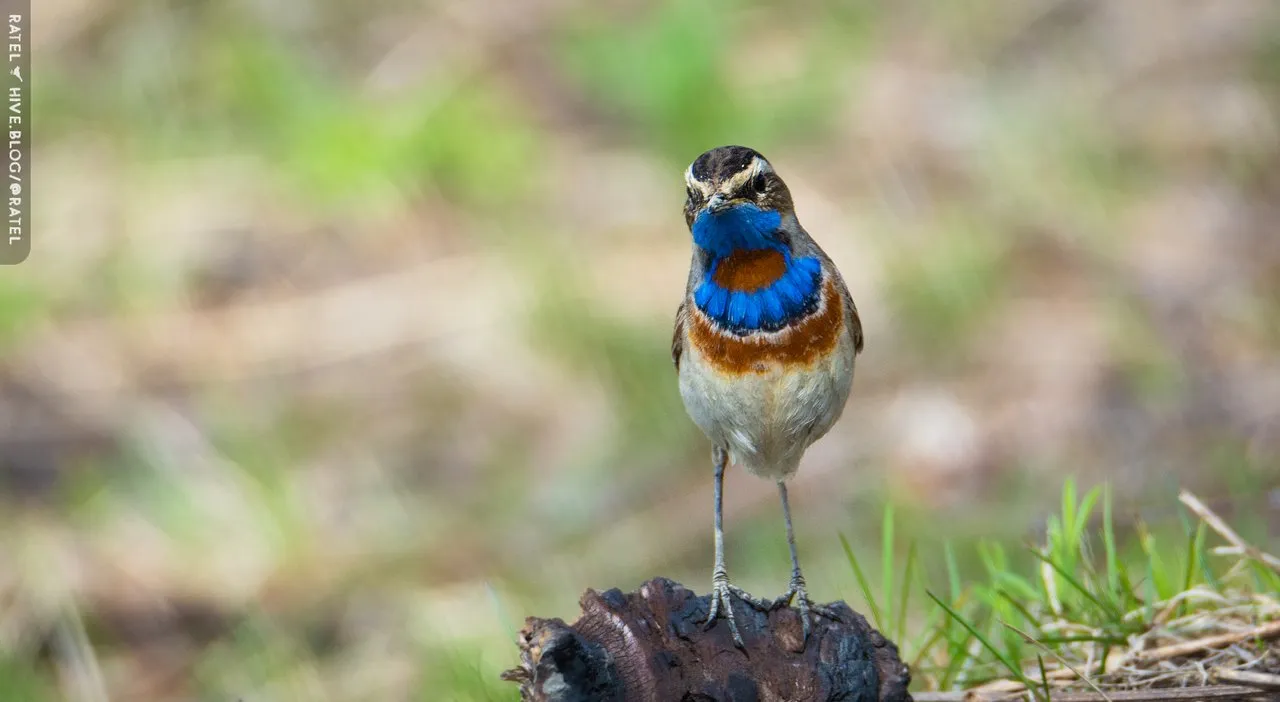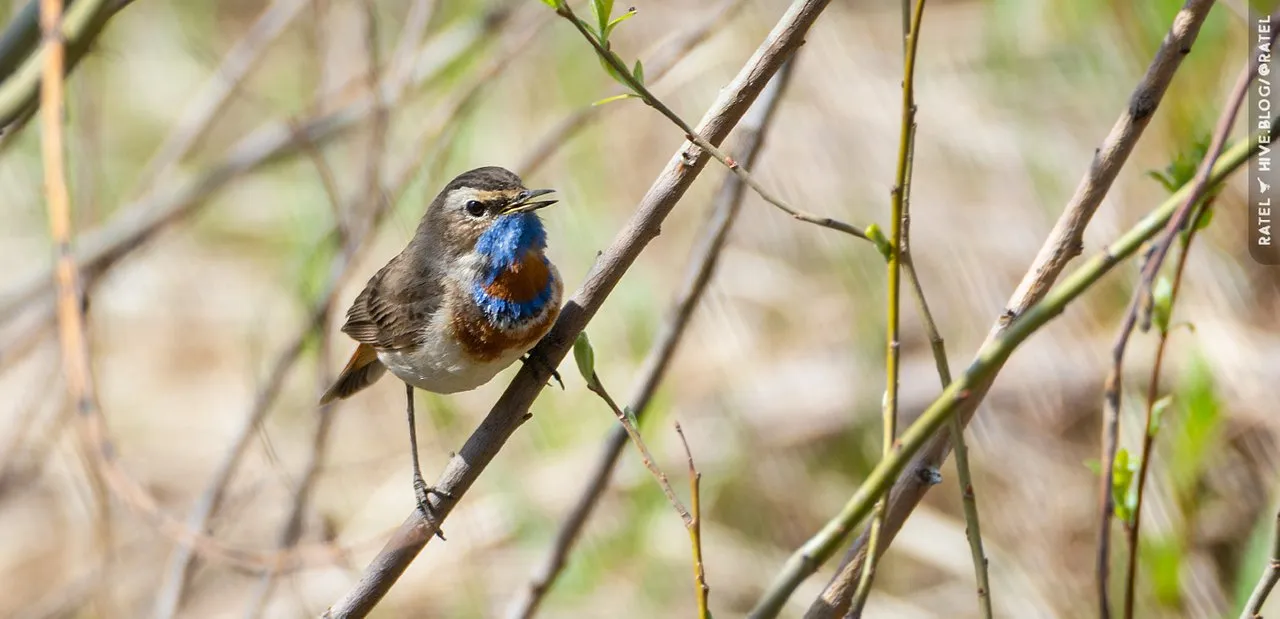
🦉 The bluethroat (Luscinia svecica)
📚 Luscinia (lat.) Nightingale
📚 svecica suecicus (lat.) Swedish; the name svecica, according to the history of the description, is not a toponym, but is given for the color of the male's chest:
Olof Rudbeck junior, Swedish botanist and birdwatcher, mentor to Carl Linnaeus,
having discovered the bluethroat in 1695 in Lapland, he gave it the name Avis Carolina in honor of the Swedish king Charles XI and the blue-yellow Swedish flag (in those days the yellow color on the flag was more reddish), and K. Linnaeus in 1758, when the absolute power of the monarchy in Sweden was no longer, considered the name svecica more correct than carolina (Jobling, 2010)

It's funny, but I see these multi-colored nightingales more often than common and any other birds of this family.
If the spring is early and warm, then at the end of April they arrive in Siberia.
They are actively singing while sitting somewhere inside the bushes. In general, their whole life is spent there. They also feed there, but most of all on earth.
To see these birds, you just need to lure them to the sound by turning on their own voices on the speaker. Or you can see them during a demonstration flight during a marriage song.



